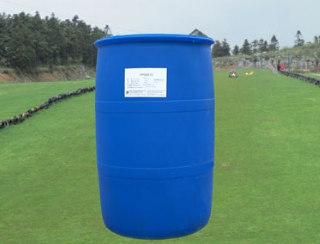Compared with ionic surfactants, nonionic surfactants have less foam generation and are less stable. Some surfactants are easily soluble in water and can't reduce the surface tension below 30dyne / cm. For example, alkyne glycol system, organic silicon system (Tegopren) and fluorine (perfluorooctanoate) surfactant are very water-soluble and can reduce surface tension to below 25dyne/cm. They are all effective defoamers. The mechanism of defoaming is to replace the foaming surface film produced by easily foaming surface active agents with completely different membranes. The surface tension of the defoamer must be lower than that of the surfactant, so that the defoamer can be used spontaneously. It was developed on the existing membrane.

Organic alcohol (hexadecanol) and ester (triacontate phosphate) can also be used as defoamer. The dosage of defoamer should be controlled, generally. Based on polymer solid, the dosage should be less than 0.01%. If the dosage of defoamer is too high, it may have adverse effects on the film.
In electrostatic spraying technology, the atomized coating particles obtain high voltage in the spray gun. Therefore, the coating particles are attracted by the grounded substrate. The utilization rate of the coating is high and the covering quality of the substrate is good. However, in solvent based coatings, the resistance may be too high (> 10000m) due to the non polarity of the solvent Ω Therefore, the coating coverage on the substrate is very low. The solution to this problem is to add polar solvents, but a large amount of polar solvents may have to be added to achieve the required resistance. For example, the resistance of xylene (> 10000m Ω Vol - ') to the desired value (0.6m) Ω Up to 50% butanol must be added.
Another way to reduce the resistance of coatings is to use cationic surfactant, which has the advantage of less surfactant (< 5%). When there is at least one alkyl group (> c16h33) in the surfactant, the effect of reducing the resistance is better, which is also conducive to the dissolution of the surfactant in non-polar solvents. The properties of the equilibrium ions associated with the polar groups of cations are also very important. Generally speaking, halogen equilibrium ions are not suitable, because they tend to accelerate the corrosion under the coating, and amine cationic surfactants should be selected.